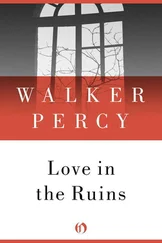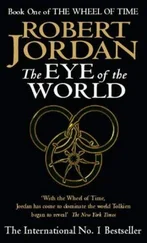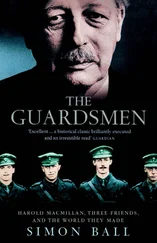Nothing more was heard of Botany Bay.
Four years later, the subject of New South Wales, as it was now generally referred to, suddenly reappeared in Banks’s life.
On 28 July 1783, from an address off Grosvenor Square in London’s Mayfair, James Matra wrote a letter to Joseph Banks. This was not the first time Matra had written to Banks but the subject of this letter was out of the ordinary, very different from his former concerns. He was very agitated.
Matra, or Magra, his birth name (he changed it in 1775), met Banks in 1768 on HMS Endeavour . Born in New York in 1746, one of three sons of a wealthy Corsican couple who had come to New York by way of Ireland, James Matra was drawn to the sea and served on several British ships during the Seven Years War (1756–63). A few more naval appointments followed on ships that took him to Chatham, Dublin and finally London. There, on 25 July 1768, he signed on as Able Seaman on HMS Endeavour . One month later, the ship left Plymouth for the Pacific.[20]
Matra, who was promoted to full midshipman just before the ship arrived back in England, is hardly mentioned in the surviving journals. In his own journal, Banks acknowledges his presence but does not record his name, referring to him instead as ‘one of our Midshipmen an American’.[21]
Less than a month following the return of the Endeavour , Matra was promoted but he chose not to pursue a naval career.[22] Instead he remained in London, probably spending some of the time in the company of Banks, Solander and those in their circle.[23] Six months later, though, a new career opportunity opened when he was appointed British Consul to the Canary Islands, based in Tenerife. He remained in this post until March 1775 when he returned to London, where, towards the end of the year he petitioned the King to have his name changed to Matra.[24] A short trip to New York followed and then in mid 1778, he accepted a return to consular life when he agreed to be Secretary to Sir Robert Ainslie, British Ambassador in Constantinople.[25]
Not particularly happy in this situation, Matra was back in London in July 1781. And it was here, as an exiled American Loyalist, a British subject who had remained loyal to the Crown during the revolutionary war, that he formed his grand design, the essence of which he shared with Banks in July 1783.
In his letter, Matra, who had been corresponding with Banks for several years, asked about rumours he had heard that there were plans being considered to settle New South Wales.[26] Matra had learned, he continued, that Banks was the guiding hand in one of these plans and added, as he had ‘frequently revolved similar Plans’, that he would ‘prefer embarking in such a Scheme’.[27]
There is no surviving evidence that Banks was involved; but Matra was probably correct that there was a plan afoot, which he attributed to Sir George Young, a senior naval officer, and Sir George Jackson, Second Secretary to the Admiralty.[28] One month after writing to Banks, Matra offered his own proposal to the government to settle New South Wales with American Loyalists and other free settlers, ‘an Object … which may in time, atone for the loss of our American colonies’.[29]
Matra’s proposal was wide-ranging and covered all aspects of how the settlement would be provided for and what its future would hold. The key point is that it would pay for itself, as it could grow the same economically useful plants that were already growing nearby in the islands of the East Indies to the benefit of other European nations – sugar, coffee, tea, indigo and cotton received special mention. Matra also pointed out, and in some detail, the strategic role, both political and economic, that New South Wales could play in a new Pacific region. He had the backing of ‘some of the most intelligent, & candid Americans’ for whom this proposal held out their best opportunity of re-establishing their lives. And what’s more, Matra had Banks’s full support.[30]
No sooner had Matra laid his ideas before the government than matters took an unexpected turn. Lord Sydney, the Home Secretary, met with Matra and laid before him the idea that was brewing in the Cabinet that New South Wales might be suitable for convicts punished with transportation. With negotiations completed leading to the signing of the Treaty of Paris between Britain and the newly established United States, the government had to look for a new destination for transportation. Matra was very enthusiastic about Sydney’s idea. ‘I believe’, he wrote in April 1784, ‘that it will be found, that in this Idea, good Policy & Humanity are united.’[31]
Events moved ahead very swiftly, because the number of people convicted of crimes in England was growing rapidly.[32] This was not the time to be concerned with a free settlement. Pressure on local prisons was becoming intolerable and the chorus demanding the government resume transportation was increasing in volume.[33]
Even though, with Banks’s backing, Matra spoke glowingly of New South Wales, it was not at this time the government’s favoured option. North America was being reconsidered. On two occasions in 1783 and 1784, transportation was resumed clandestinely to Maryland but the experiment failed.[34] And then, at the end of 1784, West Africa, which had been discussed at the Bunbury Committee, became the government’s favourite choice, though it did not publicise the fact.[35]
When word got out that the government was seriously considering West Africa, opposition to the idea, especially from Edmund Burke, gained momentum – he and other Members of Parliament were convinced that West Africa was a graveyard for white people. Transportation, they reiterated, was a punishment, not a death sentence. The government paused and agreed with the idea put forth by Francis Seymour Conway, Lord Beauchamp, MP for Orford, that a committee should evaluate the government’s recommendation. Chaired by Beauchamp, the committee sought expert testimony on the suitability of West Africa as a penal colony. The government was looking for support to establish a settlement on Lemaine Island, four hundred miles from the mouth of the Gambia River. The specific legislation, the Transportation Act of 1784, was already in place. Unlike its earlier 1718 version, which specified the American colonies as the destination for transportation, this Act left it up to the government to decide on a suitable place of banishment. If everything went according to plan, then all the government would need to do would be to raise an Order-in-Council to specify Lemaine Island as the convict destination.
As it turned out, nothing went according to plan. In its first stage of hearings, held between 26 April and 3 May 1785, the Beauchamp Committee heard one witness after the other pour scorn on the idea of transportation to West Africa.[36] In its first report, on 9 May, Beauchamp’s Committee confirmed that West Africa was unsuitable.[37]
In the second stage of its hearings, beginning on 9 May, the Committee widened its questioning beyond West Africa. One of the first to appear was James Matra. There was nothing surprising in this. Since he had proposed New South Wales as a settlement in August 1783, other influential people had added their voices to his, including Sir George Young, a prominent naval officer, and his brother-in-law Sir John Call, a military engineer and wealthy MP with wide experience in Indian affairs.[38] Matra appeared twice and repeated many of the claims he had been making for the past two years.[39]
Banks, too, was invited to give his opinion. It was a Q and A. ‘This Committee’, Beauchamp began, ‘would be glad to know where in your Voyage with Captain Cook it occurred to you that there were any places in the newly discovered Islands to which persons of such Description might be sent in a Situation where they might be able by Labour to support themselves?’[40]
Читать дальше












